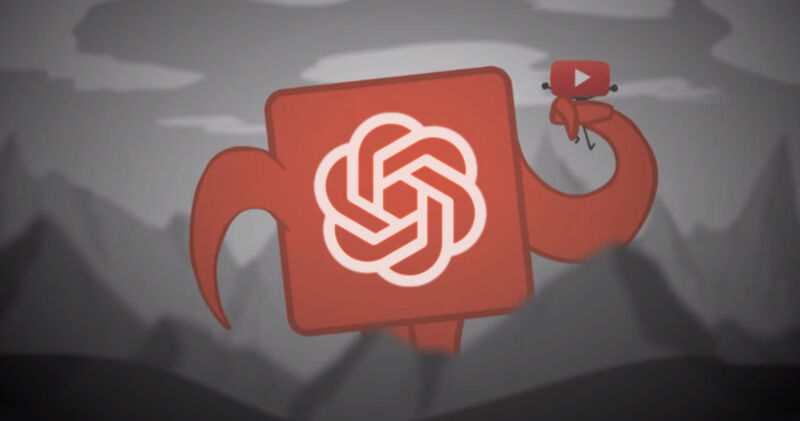
Enlarge / The Google integration monster rises with a new face. (credit: 123pendejos / Ron Amadeo / OpenAI)
Years ago, circa 2011, Google was in a panic. Facebook was on the rise and Google was convinced the social network would soon swallow everything. To fight this blue scourge, then-Google CEO Larry Page issued a decree to his many employees: Your bonuses are now tied to Google's success in social! Build social features into everything! That memo resulted in many ham-fisted social integrations across Google that were widely hated by the user base. YouTube comments were tied to Google+, and the site was flooded with spam. Making a new Gmail address also required making a Google+ account. Google Search got little "+1" buttons, and generally anonymous usage of Google products was impossible due to the "real name" policy. And that's just the Google+ stuff—earlier this memo resulted in a social network being built into Gmail called "Google Buzz" that all users were initially forced to join.
That forced integration strategy was an abject failure, and after a few years of Google's social panic, all of Google+'s integrations were removed, and the service was eventually shut down. That past failure isn't stopping Google from pulling out that losing playbook for its next great panic: Bloomberg's Julia Love and Davey Alba report that Google wants to build ChatGPT-style features into everything. According to the article, Google issued "a directive that all of its most important products—those with more than a billion users—must incorporate generative AI within months."
We wrote last month that Google's ChatGPT panic seemed a lot like its response to Google+, and several employees relayed that same sentiment to Bloomberg. Just like with G+, the report added that "current and former employees say at least some Googlers’ ratings and reviews will likely be influenced by their ability to integrate generative AI into their work."
Read 3 remaining paragraphs | Comments

Enlarge / The Google integration monster rises with a new face. (credit: 123pendejos / Ron Amadeo / OpenAI)
Years ago, circa 2011, Google was in a panic. Facebook was on the rise and Google was convinced the social network would soon swallow everything. To fight this blue scourge, then-Google CEO Larry Page issued a decree to his many employees: Your bonuses are now tied to Google's success in social! Build social features into everything! That memo resulted in many ham-fisted social integrations across Google that were widely hated by the user base. YouTube comments were tied to Google+, and the site was flooded with spam. Making a new Gmail address also required making a Google+ account. Google Search got little "+1" buttons, and generally anonymous usage of Google products was impossible due to the "real name" policy. And that's just the Google+ stuff—earlier this memo resulted in a social network being built into Gmail called "Google Buzz" that all users were initially forced to join.
That forced integration strategy was an abject failure, and after a few years of Google's social panic, all of Google+'s integrations were removed, and the service was eventually shut down. That past failure isn't stopping Google from pulling out that losing playbook for its next great panic: Bloomberg's Julia Love and Davey Alba report that Google wants to build ChatGPT-style features into everything. According to the article, Google issued "a directive that all of its most important products—those with more than a billion users—must incorporate generative AI within months."
We wrote last month that Google's ChatGPT panic seemed a lot like its response to Google+, and several employees relayed that same sentiment to Bloomberg. Just like with G+, the report added that "current and former employees say at least some Googlers’ ratings and reviews will likely be influenced by their ability to integrate generative AI into their work."
Read 3 remaining paragraphs | Comments
March 10, 2023 at 01:36AM

Post a Comment